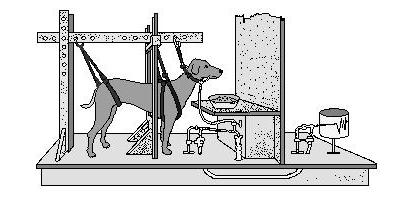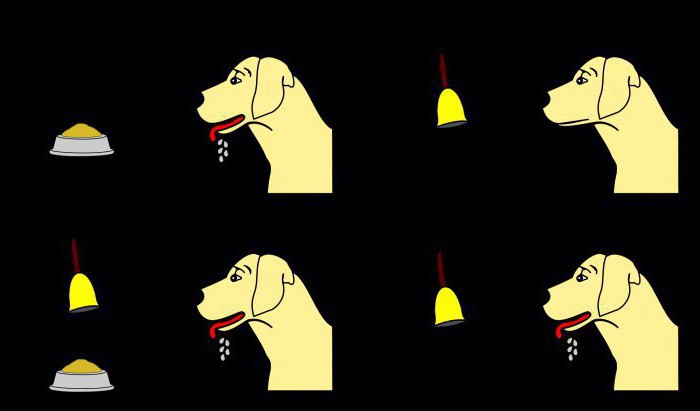The debate about whether Ivan Petrovich Pavlov was a great scientist of his time, or it was a real pleasure to see the torment of his "wards", still does not cease. Let's try to discard emotions and look at everything impartially.
The essence of the experiments
I.P. Pavlov in his laboratory, located near St. Petersburg, in Koltushi, experimented by studying the mechanisms of formation of the conditioned reflex. The scientist conducted his research on dogs. All work was carried out in a kind of “Tower of silence” - a special isolated soundproof chamber in which there were no external stimuli that could affect the purity of the experiment. At the same time, the scientist observed the animal through a system of special glasses through which he himself remained invisible to the dog. The dog was also fixed on a special machine, which limited its movements.

Pavlov devoted the main attention in the experiments to how the salivary glands of a dog react to various external stimuli. To do this, the animal underwent surgery, taking the salivary gland duct outward in time to fix the presence of salivation, its onset, abundance and quality of saliva. Then Pavlov tried to provoke a conditional reaction in the animal to a previously neutral stimulus - sound, light. In addition, the ends of the esophagus were brought out to monitor the development of gastric juice in the dog.
Pavlov’s classic experience with dogs is that when the animal was immediately fed after the metronome strikes. After several such attempts, the dog began to salivate on the sounds of the metronome. Pavlov’s experiment with a bulb acted on the same principle, but instead of a metronome, a conventional lamp was used, after which the dog received food. So earlier, an extraneous source for the animal became that external stimulus that began to cause a conditioned reflex in it. Unfortunately, not all irritants were so harmless. In his experiments, Pavlov used electric current, various punishments.
Practical use
One of the most interesting examples of the application of Pavlov's experiments is the development of conditioned reflexes in coyotes to the taste of lamb. For the occurrence of this reflex, the coyotes were flown poisoned sheep meat. Surprisingly, after the first time they stopped hunting for sheep, associating meat with the malaise that arose after it was taken. Many farmers immediately adopted it.
The role of experiments
The theory of the occurrence of conditioned reflexes, made more than a hundred years ago, to this day remains one of the fundamental in the history of psychology. Even modern psychologists are guided by the results of Pavlov’s experiments in the treatment of certain mental disorders, as well as shaping behavioral reactions.
Dogs Pavlova
Many of the operations that the scientist carried out ended in failure for the animal. As Pavlov himself said, when he cuts and destroys a living animal, he suppresses the caustic reproach within himself, which breaks the artistic mechanism. But he does it only in the interests of truth and for the benefit of people. Carrying out his experiments, Pavlov did all surgical interventions only under general anesthesia, so as not to cause additional suffering to the animal. A monument to a dog that he erected in St. Petersburg also speaks of the scientist’s attitude to his charges.

Now Pavlov’s dog is not just a wordless experimental animal. This is a real martyr, a patient hero who suffered for the help of science and the whole person. Many films have been made about her, a large number of books have been written, and monuments have been erected. Despite his death, the memory of this animal is still alive. The name of Pavlov for any of us is immediately associated with a dog, so we can safely say that this is the rare case when the memories of the experimental animal survived the memory of the greatest scientist.
Conclusion
So was Pavlov a great scientist? This question can definitely be answered only positively. But were his methods justified? There is no single answer.
Undoubtedly, his contribution to psychology is invaluable, but, unfortunately, sometimes for the sake of science one has to sacrifice some ethical standards. Let's not forget that all the surviving animals were with the scientist on a lifetime pension. I would like to think that not only for the sake of further observations.